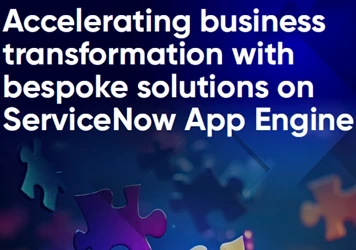Technological transformation can go massively wrong if all the elements of your business aren’t adequately coordinated. The following story illustrates how effective management of business processes can play a leading role in helping organizations to avoid the potential financial drain when a tech implementation fails.
The state of Washington has a community college system that consists of a total of 34 community and technical colleges. In 2010, its board decided to install a new $100 million ERP system to unify its various administrative systems and streamline operations. The transition was to begin in 2013, with the system going live in 2014 and all remaining glitches being addressed by the beginning of 2015.
Unfortunately, the project quickly became a fiasco. According to CIO, one reason was that the 34 different colleges each had their own business processes — a fact that didn’t become apparent until the rollout had begun.
Matters got even more complicated when the company hired to install the ERP system was bought by another organization, which promptly sued the school system for $13 million because it claimed the colleges’ internal dysfunction was the cause of the failed rollout. Eventually, the case was settled — but by that time the project had overshot its intended delivery date by at least three years.
At best, your organization faces a missed ROI opportunity when digital transformation fails. More often than not it leaves companies in disarray, which can cost them their people and future success. As a result, they struggle to find a way to remedy the situation — something that usually requires a further investment of time and money.
Build a change-fit team
The need for digital transformation usually springs from the realization that operations can become far more efficient with a technological system that streamlines and unifies previously siloed processes.
Yet in an organizational setting, there’s bound to be some resistance to change if people don’t understand how it will benefit the company or themselves. To successfully implement a technological transformation, you need to foster an agile mindset and the capability for change throughout your organization. There are four key elements involved in this endeavor:
- Leadership: Your leadership team should set the example by visibly spearheading the transformation. They should explain why the new technology is necessary and highlight how it will change things for the better. When your people see that their leaders are in full support of the initiative, they’re more likely to trust the process and embrace the transformation.
- Change management: Appoint a change management team that’s tasked with guiding your people through the transformation. This team needs to have a full understanding and complete overview of the status quo, as well as of the desired future state.
- Communication: Transformation relies heavily on effective communication between the team that’s implementing the new technology and the people who will be using it. Processes describe how tasks will be completed, so they’re an effective way to communicate and involve everyone. Effective process management platforms should encourage process conversations and facilitate feedback.
- Troubleshooting: Every new technology implementation will have bugs and glitches that need to be worked out. Involve your whole organization in reviewing and making suggestions to improve processes - even after the project is complete - and empower process owners to make updates.
How to achieve your projected ROI
Clearly, technological transformation is often an all-encompassing endeavor — one that requires careful planning and guidance throughout the entire implementation process. And while each company has its own unique set of processes and process variations, all organizations have one thing in common — their processes are what drive their operations.
For this reason, it’s imperative to be selective about which processes to include in the technological transformation. Be meticulous about how those processes are captured, reviewed, updated and shared. These best practices can help:
- Involve teams in the capture of existing processes and process variations. It’s essential to gain a good overview of the tasks your people execute every day, so involve them in mapping what they do. This will highlight which processes are worth keeping as they are, which are outdated, and which can be eliminated altogether.
- Organize workshops to get everyone on the same page. These workshops will provide an opportunity for your teams to learn about the current state, as well as the why, how and what of the desired future state. By getting all your people on the same page, you can minimize resistance to change and increase company-wide buy-in for when the new technology has been implemented.
- Plan and analyze up front. Ensure that the project team can access your organization’s processes, so they have an in-depth understanding of what people do every day. Understanding exactly which software to implement makes it easier to design and test the solutions, as well as to train your people on how to apply them.
Prioritize the human element
The average investment an organization makes in new technology is significant. When you know what’s at stake, it becomes clear just how important it is for the implementation of that technology to be successful.
By understanding the key elements of engaging your people in the change and adhering to best practices, you can enhance your chances of your technological transformation succeeding and your organization achieving the desired ROI.




























